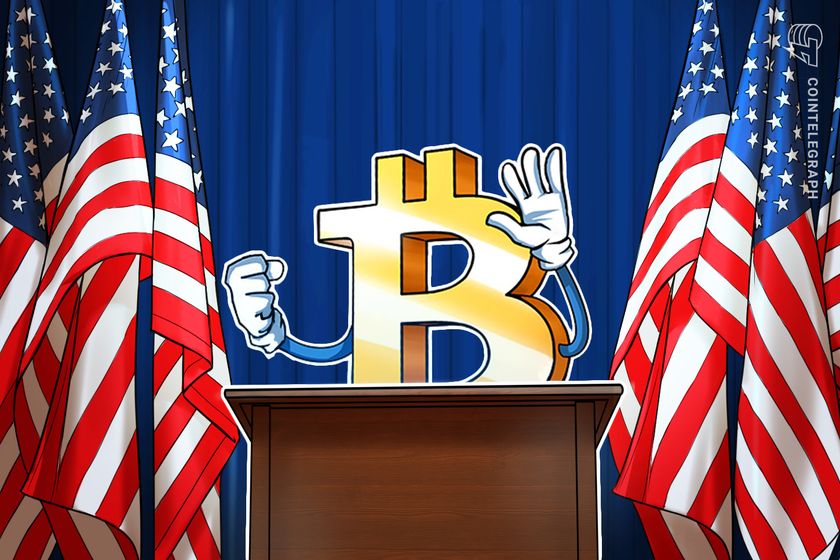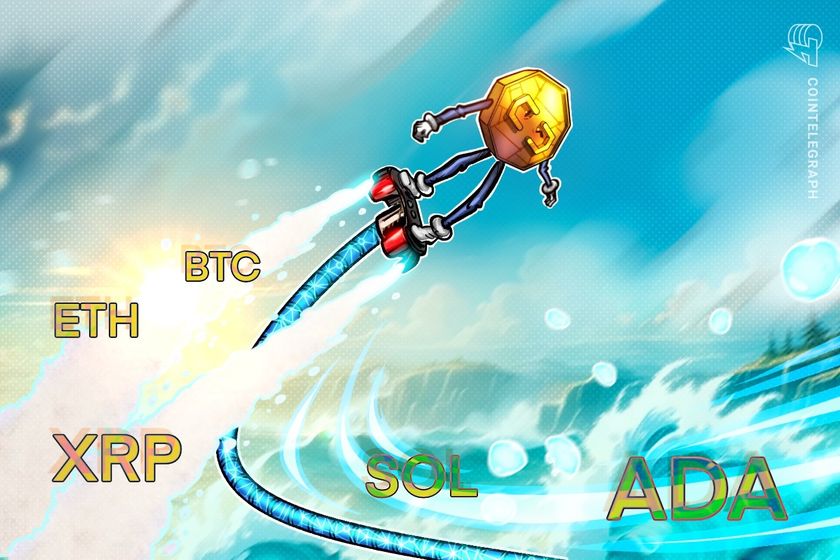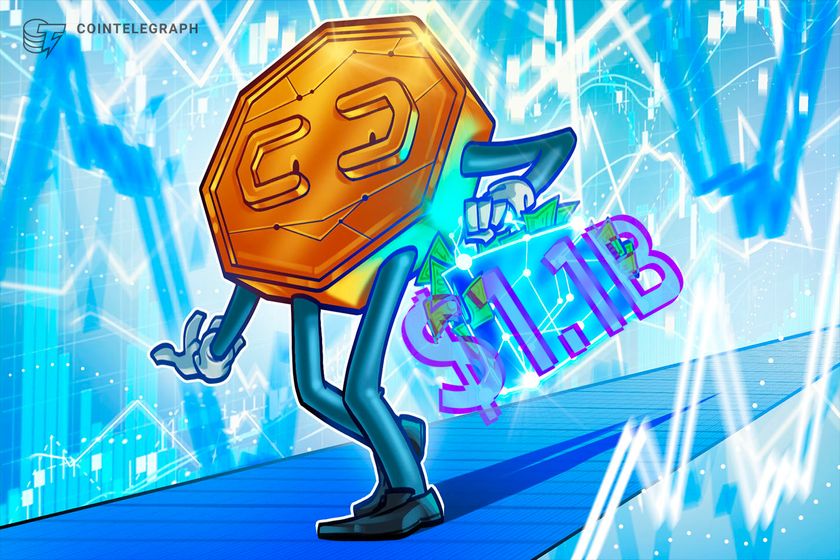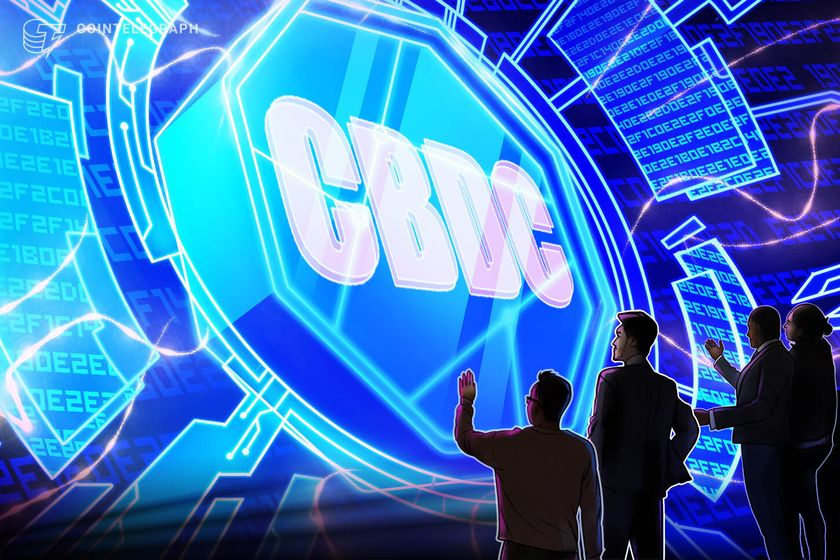
From DeFi year to decade: Is mass adoption here? Experts Answer, Part 2

Decentralized technologies’ insiders shared their views on DeFi and on the role, achievements and challenges the space faced in 2021.
Yat Siu of Animoca Brands
Yat is the executive chairman and co-founder of Animoca Brands, which delivers digital property rights to the world’s gamers and internet users, thereby creating a new asset class, play-to-earn economies and a more equitable digital framework contributing to the building of the open Metaverse.
“2021 was the year of NFTs, and in the second half of the year, we saw a growing emphasis on GameFi. This trend will continue well into 2022. Real mass adoption of DeFi will happen via GameFi, which will explode in growth during 2022 as the potential for mass financial inclusion becomes clearer to the mainstream. Financial awareness will also grow powerfully as games become more ‘financified.’”
These quotes have been edited and condensed.
The views, thoughts and opinions expressed here are the authors’ alone and do not necessarily reflect or represent the views and opinions of Cointelegraph.
Tim Draper of Draper Associates and Draper Fisher Jurvetson:
Tim is a pioneer of business ventures in the U.S. and a co-founder of Draper Fisher Jurvetson, a leading investment firm in early-stage tech startups.
“I think the regulators are slowing progress here in the United States. DeFi already has major adoption outside the United States. Notice the new names for sports pavilions are FTX and Crypto.com… they both operate outside the United States.”
Sameep Singhania of QuickSwap
Sameep is the founder of QuickSwap, a decentralized exchange on Polygon that allows users to swap, earn, stack yields, lend, borrow and leverage, all on one decentralized, community-driven platform.
“My answer here will be similar to the last one. Absolutely — in 2020 and 2021, DeFi experienced mass growth. More and more people realized the importance of having their money work for them. Institutions and retail investors started staking their crypto to earn more of it, but as more people (and bots) started using various blockchain networks, those networks became congested, and gas fees (on some of them) went through the roof. These rising costs then made the barrier of entry too high for those who only have small amounts to work with.
Just like crypto itself, for DeFi to continue gaining adoption, big-name, trusted protocols need to launch on sidechains that offer low transaction costs, like Polygon. We already saw several behemoths like Aave and Compound come over in 2021, and they brought lots of liquidity and users with them. As more big players embrace interoperability and function on multiple chains, gas fees will decrease across the board, which will give more people the opportunity to adopt cryptocurrency and DeFi.”
Ray Youssef of Paxful
Ray is the CEO of Paxful, a global people-powered platform for buying, selling and trading digital currencies.
“Decentralized finance continues to be all about financial access and inclusion. As the sector expands, education will be crucial to fostering greater pathways to mass adoption and the transformation of the financial industry as we know it.”
Michael Kong of Fantom Foundation
Michael is the CEO of Fantom Foundation, a layer-one EVM-compatible platform that is fast, scalable and secure, built on a permissionless aBFT consensus protocol.
“We’ve continued to see mass adoption throughout 2021 despite the regulatory uncertainty. Developers are building more complex, efficient DeFi systems. As layer ones such as Fantom and Ethereum become more scalable, we will see even more growth in 2022, since one of the big limitations of all DApps and DeFi as a whole is the scalability of the blockchain. Furthermore, DeFi will gain more adoption as a result of becoming more well known and mainstream.”
Lisa Edwards of Getting Started In Crypto
Lisa is an Elliott Wave specialist trader with over 20 years of experience in traditional stocks and commodities, now exclusively trading cryptocurrency. She runs and co-owns Getting Started In Crypto, Thousand To Millions and The Moon Mag with Josh Taylor.
“Again this is starting to gain traction as people learn and understand they can invest/park their money and earn much greater interest than traditional banks and finance houses provide. On the plus side, many big investment firms did fully enter the crypto space, which has been incredible to see.”
John Wu of Ava Labs
John is the president of Ava Labs, which simplifies launching decentralized finance applications on Avalanche, the fastest smart contract platform in the blockchain industry.
“In 2020, we experienced the first real DeFi boom, and in 2021, the DeFi community proved it is here to stay and building for the future by embracing multiple chains. That said, we are still in the early stages of DeFi reaching the masses.
Web2 users expect fast, responsive applications and a smooth user experience, and we’re just seeing the dawn of this phase of DeFi with third-generation blockchains like Avalanche. The amount of talent and capital accrued by the blockchain community surpasses any sector I’ve seen in over 20 years as a technology investor and venture capitalist, and users stand to benefit the most.
From developers to business development to marketing to community, everyone in this space has the bold, entrepreneurial attitude required to make big, lasting changes with technology.”
Jane Thomason of Kasei Holdings
Jane is an entrepreneur and thought leader in technological innovation, fintech and blockchain for social impact. She is the chairperson of Kasei Holdings, an investment company specializing in the digital asset ecosystem.
“Mass adoption might be an overstatement, but we have seen tremendous growth. Chainanlysis reports that global crypto adoption has grown by over 2,300% since Q3 2019 and over 881% in the last year. In DeFi, we saw the largest and fastest uptake in middle-to-high-income countries — like the United States, China, Vietnam, the United Kingdom and nations in Western Europe — with DeFi being dominated by bigger investors and with transactions above $10 million accounting for over 60% of DeFi transactions in Q2 2021. I think three things will continue to drive DeFi growth: growth in institutional investors, emerging markets with small transactions but massive populations, and gaming, where DeFi is hot.”
Filipe Gonçalves of Ankr
Filipe is the DeFi architect at Ankr, a scalable protocol built to offer multichain infrastructure for plug-and-play DeFi solutions and multichain staking for DeFi.
“The future will be multichain, and being able to switch between different networks seamlessly will play a huge role in adoption. Why? Because new DeFi users on Ethereum quickly realize that swaps are very expensive, especially for small trades. Wallets and platforms that can aggregate bridges and liquidity will make a real difference for DeFi investors, as it will enable them to pick which pools to invest in without the high fees, and it won’t matter which network they are on, be it Avalanche, Solana or Ethereum.”
Dean Tribble of Agoric
Dean is the co-founder and CEO of Agoric, an open-source development company launching interoperable JavaScript smart contracts.
“There were several moves late in the year to make DeFi visible outside of the crypto market. I do expect this to crack open the retail market in 2022. Especially, we know TradFi funds are finding ways to participate in DeFi. A key enabler for that will be regulated insurance for the correct execution of smart contracts. We expect that to start showing up in 2022.
More specifically, staking provided the primary rewards when proof-of-stake protocols first came out. But DeFi summer was driven by non-staking yield instruments. Since then, many teams have been integrating the two, so I expect various forms of staking to make a comeback with hybrid models in which staked assets can be used for leverage in other yield opportunities (e.g., liquid staking, ‘superfluid’ staking, etc.).
In terms of further regulation of the sector, I expect to see some DeFi-specific regulatory action next year. The big question is whether it adds useful clarity to help innovators get to market safely and quickly while protecting the public or whether it is greedy or poorly structured (like in the U.S. and elsewhere) such that it just drives innovation offshore. So far, the DeFi sector has successfully pushed back on a few poorly structured regulatory efforts. I’m hopeful that will continue while helping regulators address key areas usefully.”
Chris Kalani of Phantom Wallet
Chris is the chief product officer at Phantom Wallet, a Solana wallet built for DeFi and NFTs.
“We saw a decrease in DeFi usage this year, replaced by an increase in interest in NFTs. DeFi made sense for early adopters that were savvy and moving large amounts of money around, but I don’t think that this is what the masses are interested in at the moment.
It’s going to be other use cases like NFTs and gaming that are going to help drive adoption at scale.
You will see basic investing and people trying to earn some yield, but more of the advanced derivatives, yield farmers and trading are going to be fairly niche, just as it is in traditional fintech.”
Andrew Levine of Koinos Group
Andrew is the CEO of Koinos Group, an engineering-first company led by battle-hardened blockchain veterans with unrivaled experience as core developers and architects of the BitShares and Steem blockchains.
“I definitely think that we saw another order-of-magnitude increase in the size of the space, but that is a far cry from mass adoption. Mass adoption, for me, means that everyone and their mother is using blockchain-based applications in their day-to-day lives without ever even realizing it.”
Alex Shipp of Offshift
Alex is the chief strategy officer of Offshift, a decentralized application dedicated to privacy-centric storage and exchange.
“We certainly did not. We did, however, see a lot of very interesting and thought-provoking innovation and experimentation in the DeFi space. One of the biggest barriers holding back real adoption in the DeFi space is gas fees. Between off-chain scalability solutions and Ethereum 2.0, there is a lot of work going on behind the scenes. But we should be careful not to confuse CeFi adoption with DeFi adoption.”
Introduction
I’d like to highlight that the 2021 march toward decentralized finance (DeFi) mass adoption has made significant strides. Just look at the numbers: The total value locked in DeFi has grown from around $20 billion a year ago to above $230 billion at the time of writing. But the even better news is that it is still the beginning — people have just started to realize the benefits of decentralized technologies, the true potential of blockchain that changes the world.
To gain more insight on the matter, I reached out to different experts from the blockchain industry, asking: “After 2020 was named the year of DeFi, did we already see mass adoption of decentralized finance in 2021? What could help it gain even more adoption going into 2022?”
Go to Source
Author: Max Yakubowski









